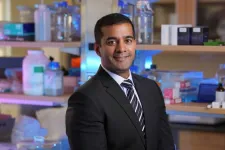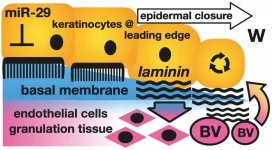(Press-News.org) A computational analysis has highlighted the poorly understood relationships and elusive histories of modern sign languages worldwide, revealing two major sign language families shaped by geopolitical forces and relevant signing communities. The findings show that the computational methods applied – which have been useful in understanding spoken languages – can be extended to the study of sign languages; as such, they offer promise for addressing the disparities in our understanding of other marginalized and diverse languages and communities. Language – a defining feature of human existence – is constantly changing and evolving. Throughout the world and across time, variations in language often reflect the histories of the communities that share them. Recent advances in computational phylogenetics have been used to detect more nuanced evolutionary relationships among the vocabularies and grammatical properties of different spoken language groups, revealing otherwise obscured histories. Like spoken languages, sign languages are naturally occurring and used worldwide. However, as is often the case for marginalized, understudied languages, the evolution and of sign languages within the communities that use them is far less understood compared to their spoken alternatives. One of the main challenges in this space is the dynamic iconicity of the fluid visual-gestural movements upon which sign languages are built. As a result, linguistic documentation is often insufficiently limited to static images or narrative descriptions.
To address this gap, Natasha Abner and colleagues applied computational phylogenetic methods to study family structure among 19 contemporary sign languages used worldwide. Abner et al. gathered video dictionary entries of core vocabulary from each sign language and developed a database of coded sign forms. Each sign was individually coded based on basic phonetic parameters of the sign form. Phylogenetic analysis of this dataset revealed two independent sign language families – European and Asian – as well as an articulated family tree for each. The authors discovered no evidence of long-term contact between European and Asian sign languages. Notably, however, the findings demonstrated a closer relationship between the Western European sign languages and British and New Zealand sign languages than has been previously assumed. Moreover, Abner et al. show that their Western European sign language family tree reflects the broad influence of French sign language and the geopolitical history of nations that established deaf education schools during the 18th century. Two distinct subfamilies of Asian sign languages were also identified.
END
The evolution of sign languages globally revealed through computational analyses
2024-02-01
ELSE PRESS RELEASES FROM THIS DATE:
AI system reveals new insights into early language acquisition through the experience of a single child
2024-02-01
A new machine learning model – trained on video and audio recorded from the first-person perspective of one young child for over a year – has provided new insights into early language acquisition. Not only do the findings offer a valuable framework to understand how children learn words and concepts, but they could be critical in developing artificial intelligence (AI) systems that can learn language in more human-like ways. Beginning around 6 to 9 months of age, children begin acquiring their ...
Targeting treatment resistance in chronic lymphocytic leukemia
2024-02-01
MIAMI, FLORIDA (EMBARGOED UNTIL FEB. 1, 2024, AT 2 P.M. ET) – New research from Sylvester Comprehensive Cancer Center at the University of Miami Miller School of Medicine and collaborating organizations has identified a next-generation BTK degrader that could help overcome treatment resistance in chronic lymphocytic leukemia (CLL) and related blood cancers.
Their findings, published Feb. 2 in the journal Science, could offer a therapeutic option for CLL patients whose tumors become drug-resistant or are unresponsive to frontline treatment.
“This new compound not only inhibits the cellular molecule BTK, but goes further by taking aim at the target ...
Sustainable carbon removals limits identified, huge climate mitigation challenge revealed
2024-02-01
*Embargoed until 14:00 US Eastern / 19:00 UK GMT / 20:00 Europe CET – Thursday 1 February*
Governments and businesses are relying on dangerous amounts of future removal of carbon dioxide (CO2) from the atmosphere, instead of more rapidly reducing emissions and phasing out fossil fuels. This problem is partly due to an incomplete picture1 of the damaging consequences of carbon dioxide removal for people, food security and natural ecosystems, according to new research published in Science.
The paper finds that the carbon dioxide removal potential currently reported by the UN ...
Whole-brain projection patterns of single neurons in mouse hippocampus unveiled
2024-02-01
A study published in Science on Feb. 1 reported a comprehensive database of single-neuron projectomes consisting of over 10,000 mouse hippocampal neurons, thus revealing the spatial connectivity patterns of mouse hippocampal neurons at the mesoscopic level.
The study was conducted by teams from the Center for Excellence in Brain Science and Intelligence Technology (CEBSIT), the Institute of Neuroscience of the Chinese Academy of Sciences (CAS), the HUST-Suzhou Institute for Brainsmatics, Hainan University, the Kunming Institute of Zoology of CAS, Lingang Laboratory, and the Shanghai Center for ...
New study suggests culling animals who ‘don’t belong’ can be a flawed nature conservation practice
2024-02-01
New research published today in the journal Science has concluded that eradicating animals on the basis that they are not native in order to protect plant species, can be a flawed practice costing millions of dollars, and resulting in the slaughter of millions of healthy wild animals.
Introduced large herbivores, or megafauna, are claimed to have distinct and harmful ecological impacts, including damaging sensitive plants and habitats, reducing native plant diversity, and facilitating introduced plants. However, up to now these impacts have been studied without comparison to a proper ...
IU surgeon-scientist studying physiological effect of microorganisms in sinuses of chronic rhinosinusitis patients
2024-02-01
INDIANAPOLIS—An Indiana University School of Medicine surgeon-scientist is leading a multi-institutional grant investigating the role of the sinus microbiome in chronic rhinosinusitis, an inflammatory disease that causes the lining of the sinuses to swell. The research team will study biospecimens from human sinus surgery patients in the lab and examine how bacteria in the microbiome shape the disease process and might offer novel therapeutic strategies.
Vijay Ramakrishnan, MD, professor of otolaryngology—head ...
Stand Up to Cancer announces changes to scientific advisory committee
2024-02-01
LOS ANGELES – February 1, 2024 – Stand Up To Cancer® (SU2C) today announced changes to its Scientific Advisory Committee (SAC), which oversees SU2C’s scientific research.
Composed of cancer research leaders from academic, government, industry, and advocacy fields, SU2C’s SAC sets direction for research initiatives, reviews proposals for new grant awards, and conducts rigorous oversight of all active grants in the SU2C research portfolio in collaboration with SU2C’s president and CEO Julian Adams, Ph.D.
World renowned cancer researcher and Nobel laureate Phillip A. Sharp, Ph.D., who has chaired the SAC since SU2C launched in ...
Small RNAs take on the big task of helping skin wounds heal better and faster with minimal scarring
2024-02-01
Philadelphia, February 1, 2024 – New findings in The American Journal of Pathology, published by Elsevier, report that a class of small RNAs (microRNAs), microRNA-29, can restore normal skin structure rather than producing a wound closure by a connective tissue (scar). Any improvement of normal skin repair would benefit many patients affected by large-area or deep wounds prone to dysfunctional scarring.
Because the burden of non-healing wounds is so significant, it is sometimes called a “silent pandemic.” Worldwide, costs associated with wound care are expected to ...
Rural placements for medical students feed ‘pipeline’ for new family docs
2024-02-01
EDMONTON — New research shows an innovative education program is helping to address Alberta’s rural doctor shortage by making it more likely medical students will set up a rural family practice after graduation.
The University of Alberta was one of the first medical schools in Canada to set up its Rural Integrated Community Clerkship program back in 2007. It sends up to 25 third-year students for 10-month intensive work experiences with a single or small number of teaching physicians.
Instead of rotating to a new specialty placement every four to six weeks as in an urban ...
Zebrafish navigate to find their comfortable temperature
2024-02-01
All animals need to regulate their body temperature and cannot survive for long if it gets too high or too low. Warm-blooded organisms like humans have various ways to do this. They release heat by sweating or expanding the blood vessels in their skin, while shivering or burning fat in their brown adipose tissue has the opposite effect.
Cold-blooded animals such as the zebrafish, by contrast, cannot do any of these, so they have a different strategy. They look for places nearby that are at their “comfortable temperature,” just like how we might go out into the sun when we feel chilly or seek out some shade once it gets too ...




